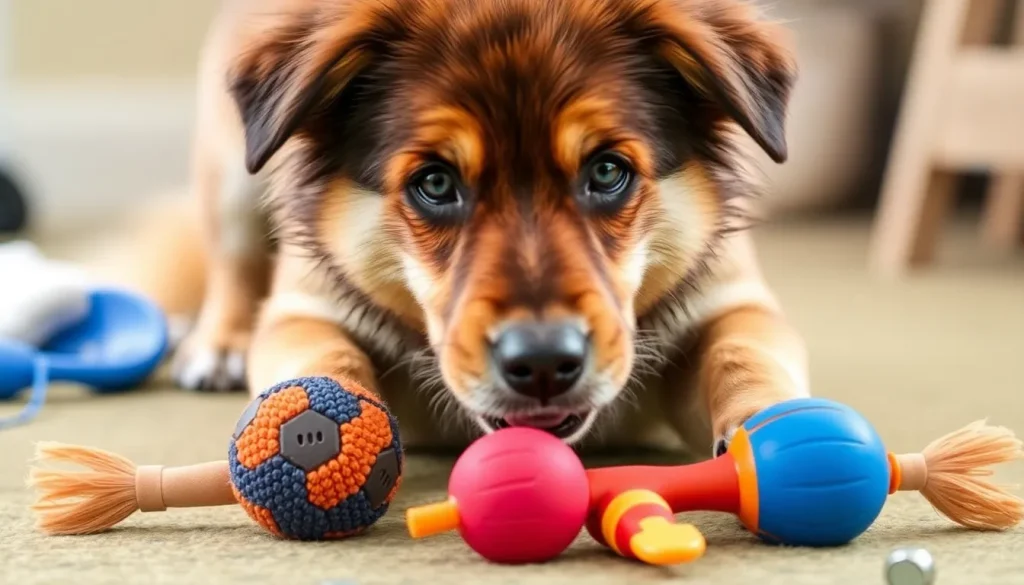Dogs can categorize their toys based on function

The incredible cognitive abilities of dogs continue to amaze researchers and dog owners alike. Recent findings reveal that certain dogs possess the remarkable capability to classify their toys not merely by name but by their function. This fascinating ability challenges our understanding of canine intelligence and opens new avenues in animal cognition studies. Let’s delve into this groundbreaking research and uncover what it means for our furry companions.
- Understanding the concept of label extension in dogs
- The significance of this research
- Previous studies on canine cognition
- Link between head shape and visual acuity
- Implications for dog training and interaction
- Practical applications and future research
- Engaging with canine cognition through play
- Conclusion
Understanding the concept of label extension in dogs
Label extension is a cognitive skill that involves applying a known label to new objects that serve a similar purpose. For example, just as a child learns that the term "cup" can refer to several different types of drinking vessels, dogs can extend their understanding of toys beyond mere physical appearance.
In a recent study published in the journal Current Biology, researchers demonstrated that dogs could categorize their toys by function without undergoing formal training. This natural learning process highlights their innate intelligence and adaptability.
Co-author Claudia Fugazza from Eötvös Loránd University in Budapest, Hungary, explains that this ability is similar to a person referring to both a hammer and a rock as "tools." The study's findings indicate that dogs can recognize that while these objects may look different, they serve the same function.
The significance of this research
This groundbreaking research emphasizes the sophisticated nature of canine cognition. The ability to classify objects by function rather than appearance suggests that dogs may possess a deeper understanding of their environment than previously thought.
- Enhanced Learning: Dogs adapt their learning strategies based on their experiences.
- Improved Communication: This ability enhances the way dogs interact with humans, as they can better understand commands related to different toys.
- Play Behavior: Understanding the function of toys can lead to more enriched play, which is crucial for a dog's mental stimulation.
Previous studies on canine cognition
Fugazza and her team have investigated various aspects of dog behavior and cognition over the years. In 2023, they explored how dogs interpret human gestures, such as pointing. Unlike toddlers who often focus on the object, dogs use gestures as directional cues, showcasing their unique cognitive processing.
This phenomenon, termed spatial bias, highlights how dogs’ visual acuity and cognitive abilities shape their understanding of the world. The research suggests that certain breeds, particularly those regarded as "smarter," process information more similarly to humans.
Link between head shape and visual acuity
Another intriguing aspect of the study involved measuring the length of a dog's head. Previous research indicates a correlation between head shape and visual acuity, with shorter heads typically linked to visual capabilities closer to those of humans. This is due to a higher concentration of retinal ganglion cells in their central field of vision.
The findings revealed that dogs with better visual acuity demonstrated a lower level of spatial bias. This implies that a dog's cognitive processing influences how they interpret spatial cues, not just their sensory perception.
Implications for dog training and interaction
The insights from this research can be pivotal for dog owners and trainers. By understanding how dogs classify their toys and interpret cues, owners can enhance their training techniques and improve the overall relationship with their pets.
- Utilize Function in Training: Incorporate toys that serve different functions into training sessions to help dogs learn more effectively.
- Encourage Exploration: Let dogs experiment with different types of toys, promoting cognitive engagement.
- Enhance Communication: Use consistent terminology when referring to toys to reinforce learning.
Practical applications and future research
The implications of this research extend beyond mere curiosity about canine intelligence. Understanding how dogs think and learn can lead to improved training methods, better toys for mental stimulation, and more effective ways to communicate with our pets.
As further studies are conducted, we may uncover even more about the cognitive capabilities of dogs and how these skills can be nurtured. Future research may also explore:
- How different breeds compare in cognitive abilities.
- The impact of environmental factors on learning and behavior.
- Longitudinal studies on the development of cognitive skills in dogs from an early age.
Engaging with canine cognition through play
Play is a fundamental part of a dog's life, serving as a means of mental and physical stimulation. Engaging dogs with puzzle toys can enhance their cognitive skills and promote problem-solving abilities.
For instance, interactive puzzle toys that require dogs to figure out how to retrieve treats can significantly boost their mental engagement. A recommended video showcases various interactive dog puzzles that stimulate mental activity:
Investing in such toys can lead to a happier, more fulfilled dog, as it encourages them to think critically and explore their environment.
Conclusion
As research continues to unveil the complexities of canine cognition, it is clear that dogs are more than just companions; they are intelligent beings capable of sophisticated thought processes. Understanding these abilities allows us to foster better relationships with our pets, enhance their learning, and ultimately enrich their lives.




Leave a Reply